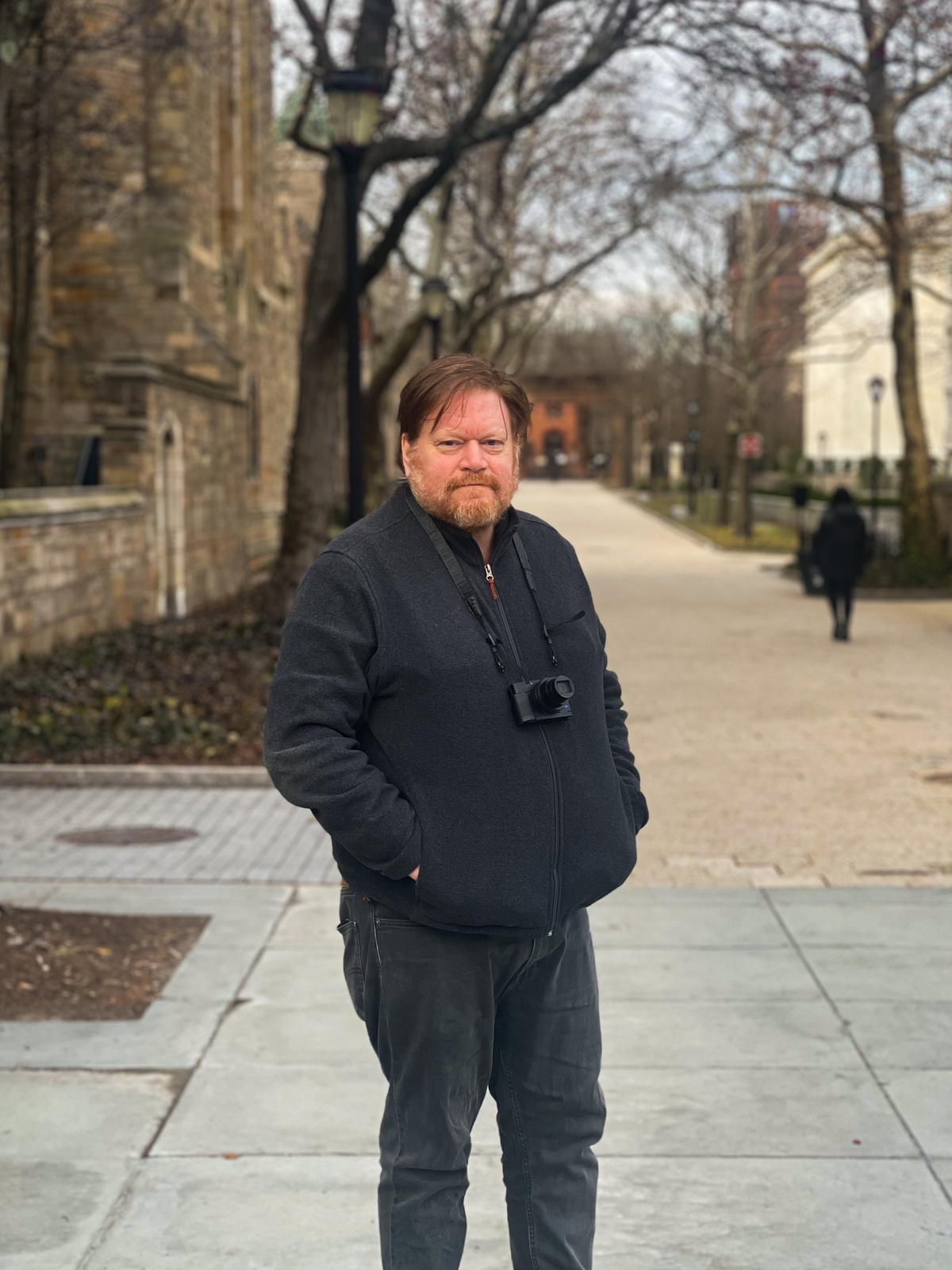Humans of New Haven: Looking through photographer Roderick Topping’s lens
The Scotland-born photographer, who has been in New Haven since 1988, has seen the city change through his camera lens.

Tenzin Jorden, Staff Photographer
Humans of New Haven is a new City Desk series inspired by Brandon Stanton’s Humans of New York. The series will include profiles of New Haven residents with a picture taken of them the same day.
When Roderick Topping told me that his photography was quiet, I tried to picture what a “quiet photo” would look like. The first thing that came to mind was a black-and-white photo of the Cross Campus courtyard before us, then in spring break hibernation mode and devoid of laughing students carrying picnic blankets and New Yorker tote bags.
“I’ve always been kind of shy about my photography, and it’s only in the past few years that I’ve gotten out there to show people,” Topping said, showing me his Instagram grid.
Topping, a New Haven resident since 1988, first picked up a camera when he was 10 years old. After graduating from Skidmore College with a degree in art, he worked several photography jobs before becoming a freelance artist dedicated to telling the stories of his “complicated home,” capturing the city’s “rich architectural landscape” and exploring the “amazing diverse population of humans” in the Elm City. New Haven has evolved incredibly before his eyes in the past 30 years — for both the good and bad, according to Topping. While crime rates are down, he reminisces on the days where there was a stronger local scene, when people did not yet have cell phones. The late nights he would spend chatting with friends at bars and the outdoor adventures that locals grew up having became less frequent as time passed, he said.
Since the start of the COVID-19 pandemic, Topping has found himself working on several projects that have taken him from Downtown to Yale, from neighborhood to neighborhood and from one abandoned storefront to another. His recent “Strange Times: Downtown New Haven in the COVID Era,” exhibit in the New Haven Museum was a collection of primarily black-and-white photographs of the city during the peak years of the pandemic, featuring snapshots of a trying and changed cityscape. He said that more important than tying together the purpose and content of his work under a single overarching theme is this hope that others will look back on his photos and remember history — that they will remember “what was” of the city they live in. According to Topping, every photo and image that he takes carefully considers the use of shadow, lighting and geometry. These visual elements form part of his journey to bring alive every aspect of the subject for the audience to see, hold onto and reflect on.
Moving forward, he is excited to “get out in the world more” and continue his work, which he described as a form of journalism.
“I still don’t have [the city] figured out,” he said, as we walked out of the courtyard. “I’ll let you know when I figure it out.” When Topping isn’t sipping coffee and exploring new reads at Book Trader Cafe, he can be found taking long walks through the city, his iPhone in hand and a Sony RX100 camera hanging over his chest.
The “Strange Times” exhibit ran at the New Haven Museum from Oct.13, 2021 through March 25, 2022, but several photographs of the collection can still be found on Topping’s Instagram page.







